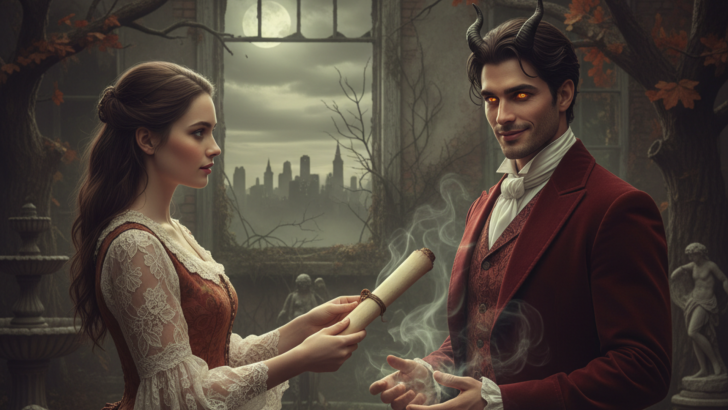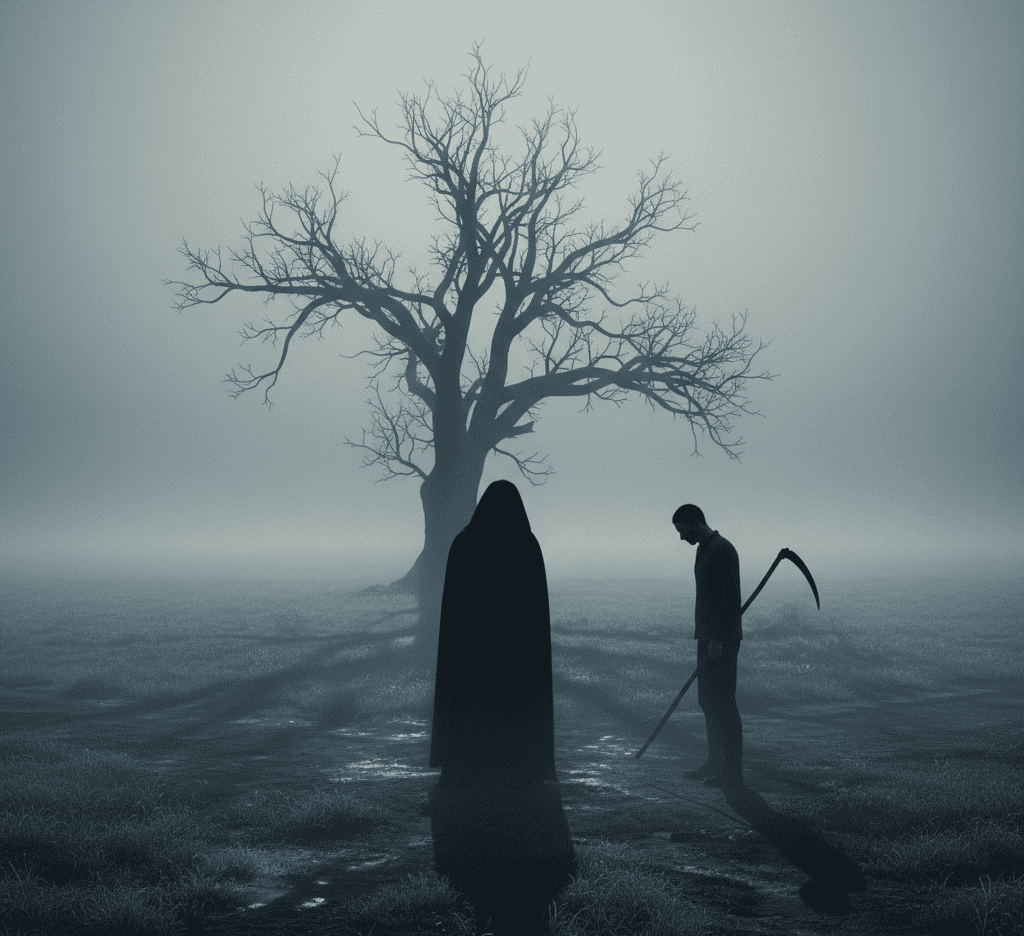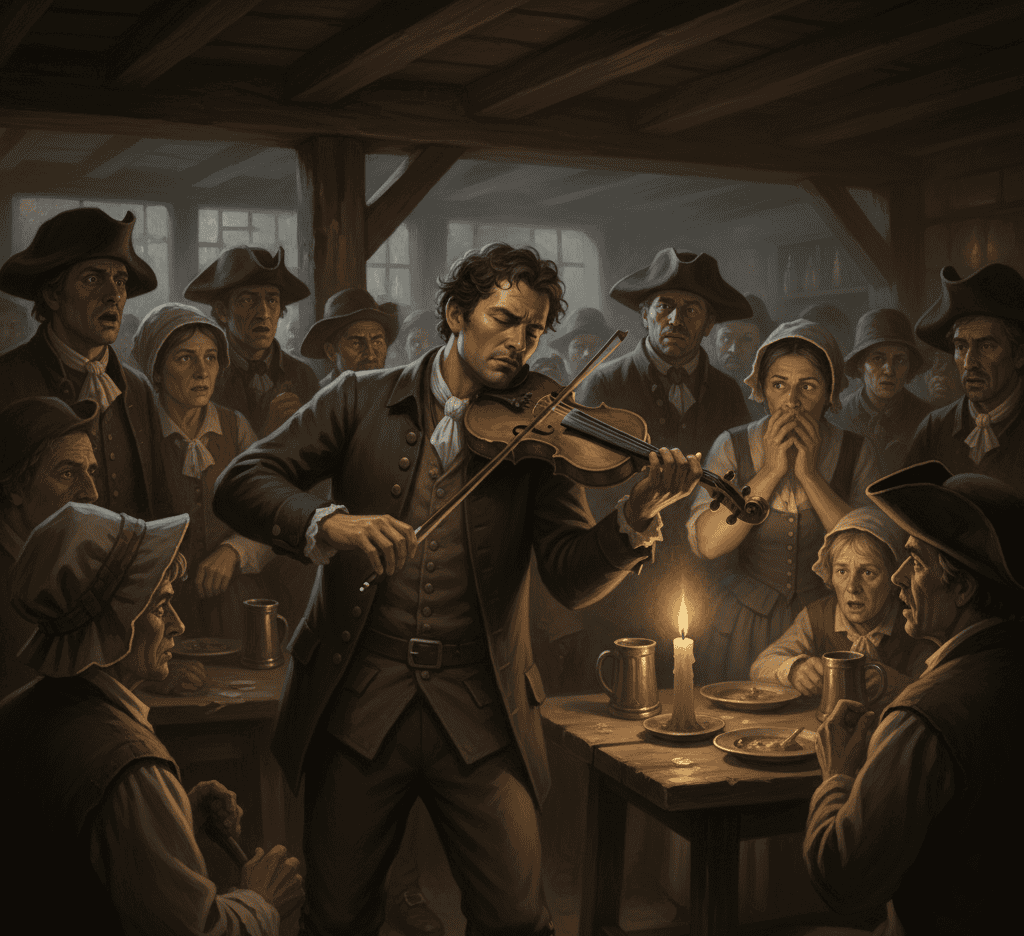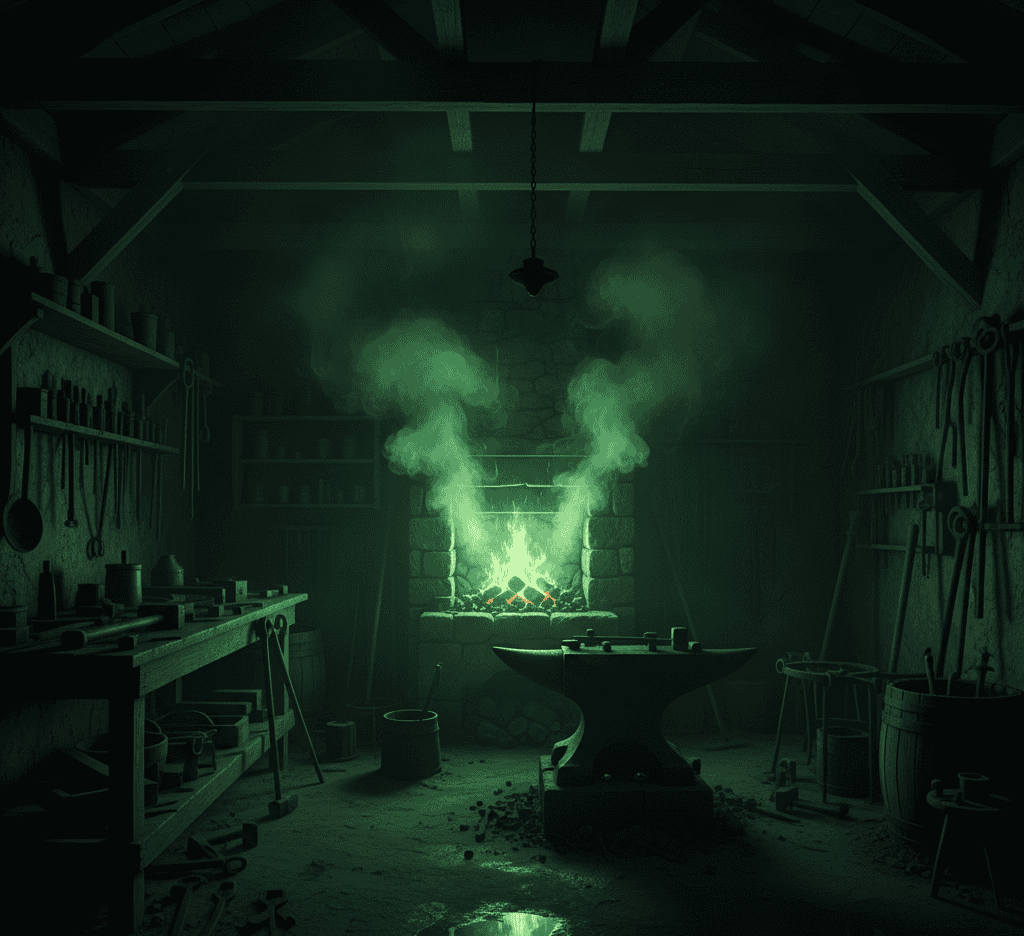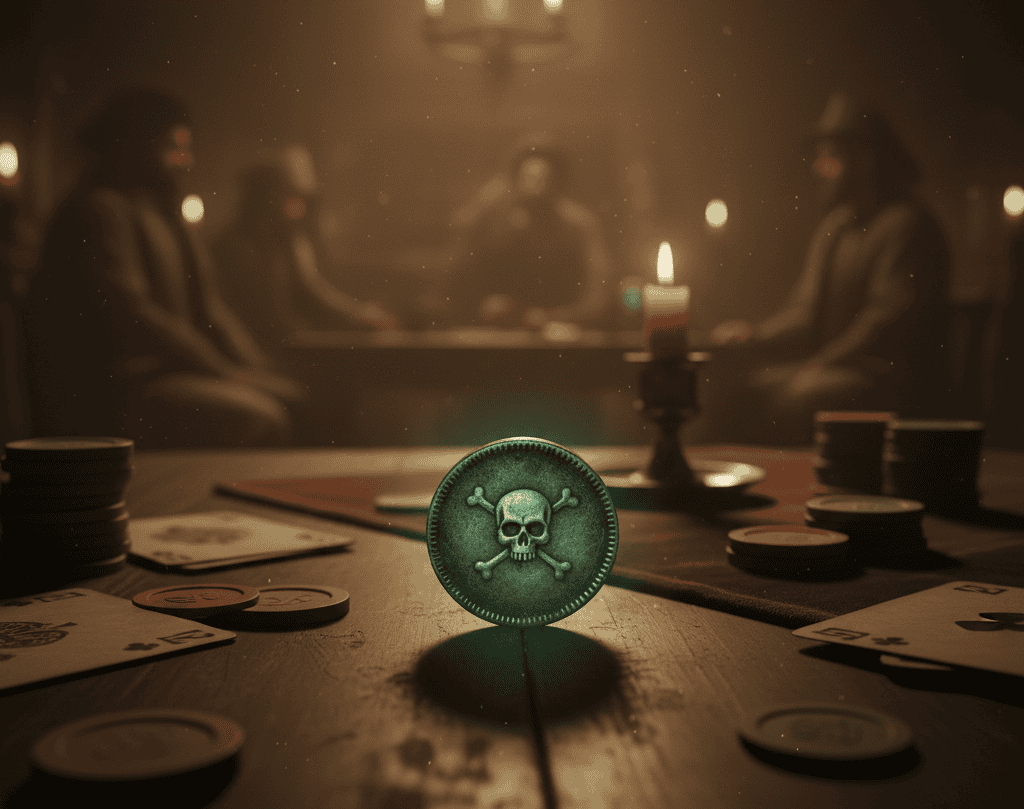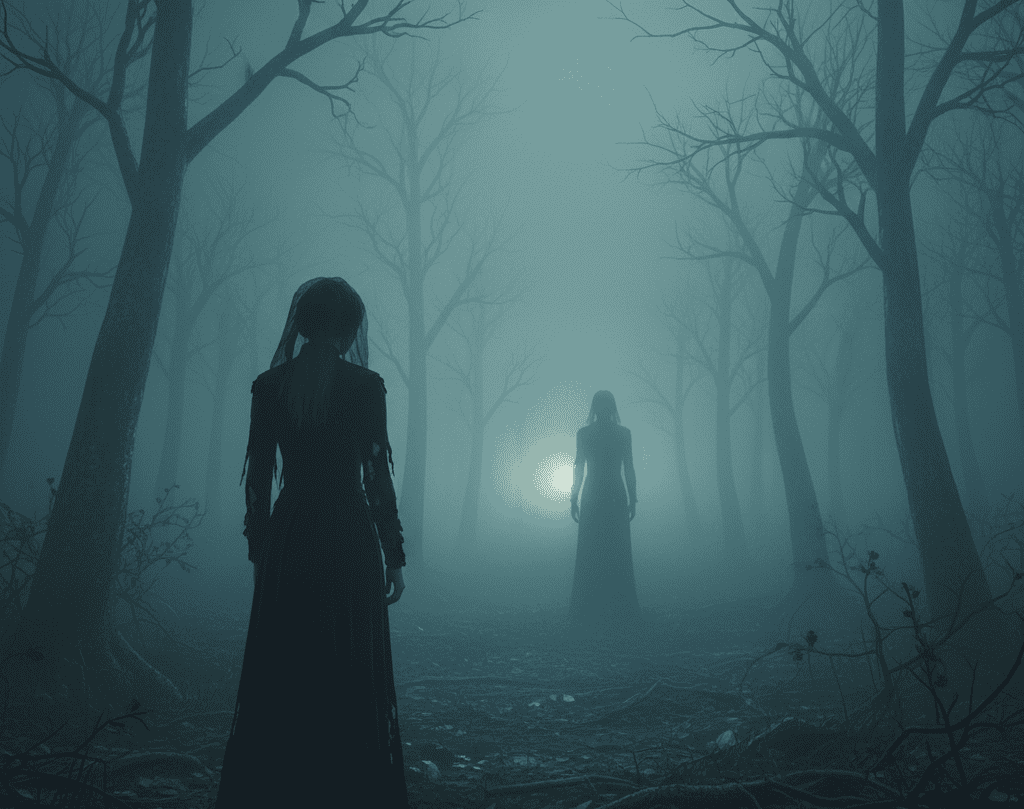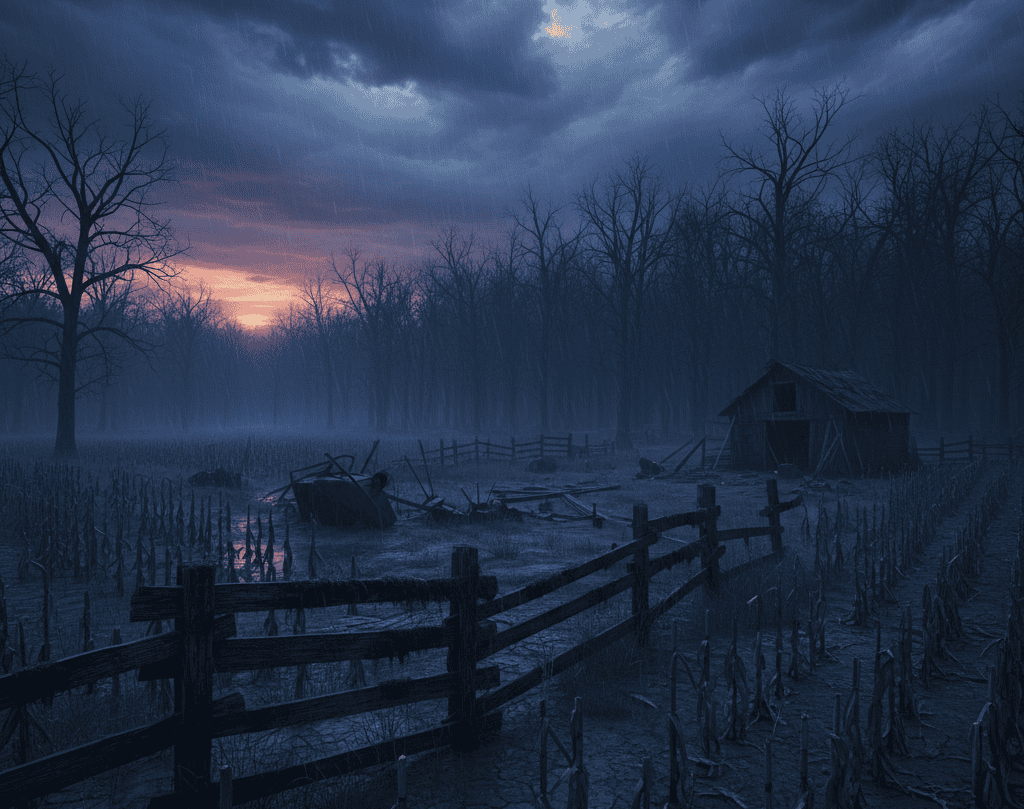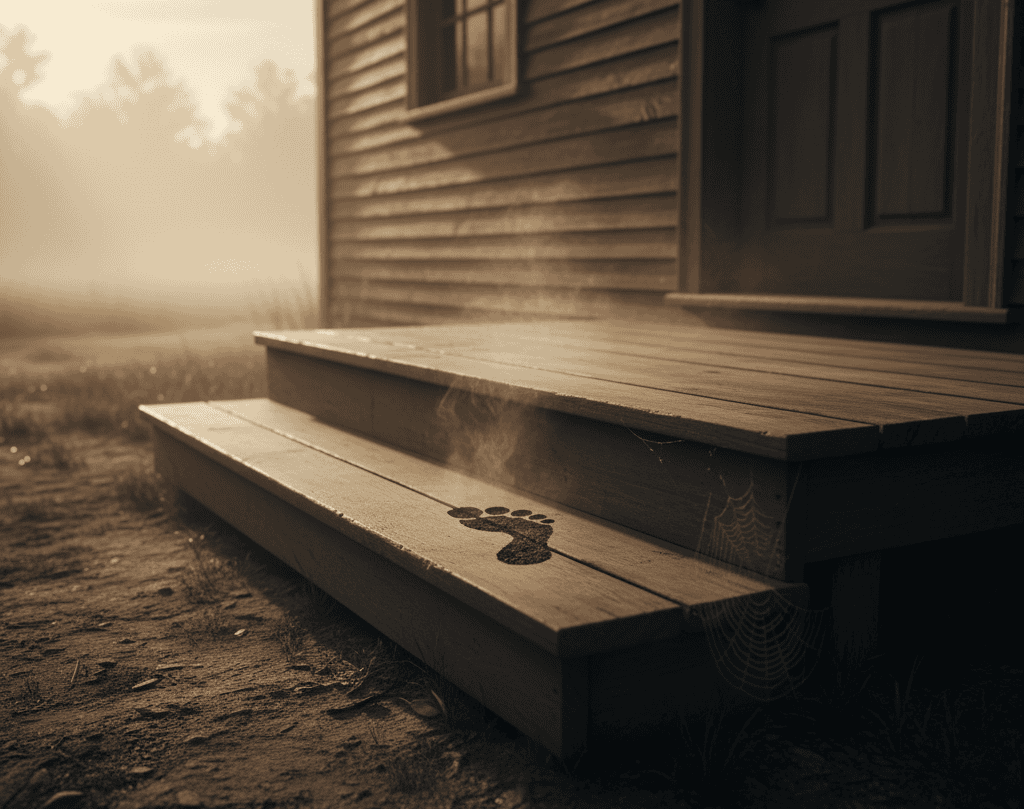In early America, fear walked alongside faith. Settlers brought with them a deep belief in good and evil, angels and demons, God and the Devil.
Life was harsh and uncertain, and when crops failed or tragedies struck, people searched for explanations beyond the physical world.
It was during these times that myths of devilish bargains began to take root. Stories spread of individuals who traded their souls for fortune, power, revenge, or forbidden knowledge.
Some became cautionary tales whispered around fires. Others were used to control behavior or accuse outsiders.
Here are ten chilling myths about pact-making with the Devil that shaped early American fear and imagination.
1. The Man Who Sold His Shadow for Riches
One common myth told in early Appalachia involved a poor farmer who encountered a stranger dressed in black near a crossroads.
The stranger offered him unlimited wealth in exchange for his shadow. Desperate to feed his family, the man agreed.
At first, life became easy. His farm flourished, and his pockets were always full. But villagers soon noticed he cast no shadow and began to avoid him.
Over time, he became pale, weak, and unable to stand in sunlight. Eventually, he vanished, leaving behind only a patch of scorched earth.
Parents told this story to warn children that fast fortune often comes with a hidden price.
2. The Crossroads and the Midnight Bargain
Crossroads were feared places where the physical and spiritual worlds were believed to intersect.
Myths spread of travelers who waited at midnight to call upon the Devil. The pact often involved the traveler kneeling and speaking their desires aloud.
In return, the Devil would mark their body in some way, such as leaving a burn on their hand or a strange symbol behind their ear.
These marks were believed to be proof of ownership, and the Devil would return on an unknown day to collect the soul.
Crossroads myths reflected fears of independence turning into rebellion and the belief that wandering from the straight path could lead one into darkness.
3. The Fiddler Who Played for the Devil
A popular tale in colonial America involved a fiddler who longed to become the greatest musician in the region.
According to legend, he met a mysterious figure who tuned his fiddle and promised him unmatched skill. After that night, his playing stunned audiences and even made people weep.
But as his fame grew, his music became strangely haunting. Some claimed they could hear cries in the melody, like souls trapped within the strings.
One night, he played a final tune so wild that dancers collapsed in exhaustion.
The fiddler was found lifeless, clutching his bow, his fiddle still vibrating with a sound that felt more like a scream than a song.
4. The Pact Sealed in Blood
A terrifying myth that circulated during the Salem witch trial period claimed that witches signed their souls away in the Devil’s book using their own blood.
People believed that once a name was written, the person gained dark powers but became bound to serve demonic forces.
This myth was used during interrogations to pressure accused women into confessing. They were told that if they had signed the book, their guilt was already proven.
The story spread fear among communities and contributed to hysteria, as any sign of literacy, secrecy, or independence could be twisted into signs of a hidden pact.
5. The Haunted Blacksmith of Pennsylvania
One legend told of a talented blacksmith who crafted weapons so sharp and strong that people claimed they were forged with unholy help.
It was whispered that he struck a deal with the Devil in order to never tire and always produce perfect work.
For years, his shop was filled with constant hammering, even past midnight. But strange sounds began to echo from his forge, like chains clattering and muffled screams.
One night, his workshop burst into flames, yet no trace of his body was found. In some versions, people claimed to see him working in the smoke, still pounding iron in eternal servitude.
6. The Devil’s Coin of New Orleans
In the early days of New Orleans, a myth arose of a gambler who made a pact for unending luck.
The Devil supposedly gave him a single coin that always returned to his pocket, allowing him to win every bet.
But the more he won, the more he lost pieces of himself. First, he lost sleep, then joy, then the ability to feel anything but greed.
Eventually, he stopped speaking and became a hollow man who played only for the thrill of keeping the coin.
At the end of the myth, the gambler disappeared, and the coin was found at a crossroads, warm to the touch and impossible to get rid of.
7. The Widow Who Asked for Her Husband’s Return
Another unsettling story from New England told of a grieving widow who visited a dark forest at night to cry out for her husband’s return.
A shadowy figure offered to bring him back if she promised to surrender her soul at the end of her life.
When she returned home, her husband was there, but he never spoke or slept and avoided sunlight. She soon realized he was not truly alive.
The longer she stayed with him, the colder her own body became. In the end, she fled to the church and prayed until dawn.
In most versions, the husband vanished, leaving behind only the smell of smoke and a faint whisper reminding her that a promise remains a promise.
8. The Pact for Vengeance on a Neighbor
Early colonial towns often struggled with tensions over land and resources. One myth spoke of a man who lost his land to a rival and in his bitterness, went into the forest to curse his enemy.
A creature with burning eyes appeared and promised him revenge in exchange for eternal loyalty. Soon after, the rival’s livestock died, his crops rotted, and his home burned without cause.
However, the man who made the pact also suffered. He became ill, unable to speak without coughing up black fluid.
The myth warns that vengeance invites darkness that consumes both sides.
9. The Elder Who Knew Too Much
There was a belief that some individuals who lived too long without aging were in league with the Devil.
One legend from early Massachusetts described an elder who seemed unchanged for decades.
She could predict storms, knew when children would be born, and spoke in ways that unsettled others. Some believed she had made a pact for knowledge beyond human reach.
According to the myth, when she finally died, thunder shook the ground, and her body turned to ash.
People claimed to hear laughter carried by the wind that evening, as though a deal had finally reached its end.
10. The Burning Footprint at the Meeting House
A final myth spoke of a man who openly mocked religion and insisted that no Devil or God existed. One night, he was said to challenge any dark force to prove him wrong.
The next day, townsfolk found a single burned footprint at the steps of the meeting house, and the man was never seen again.
People claimed that he had been taken as punishment for tempting evil without fear or caution.
This myth was often used during sermons to warn listeners never to provoke supernatural forces or assume immunity from spiritual consequences.

自出生以来,我一直感觉到自己与神灵有着紧密的联系。作为一名作家和导师,我的使命是帮助他人在最黑暗的时刻找到爱、幸福和内心的力量。

